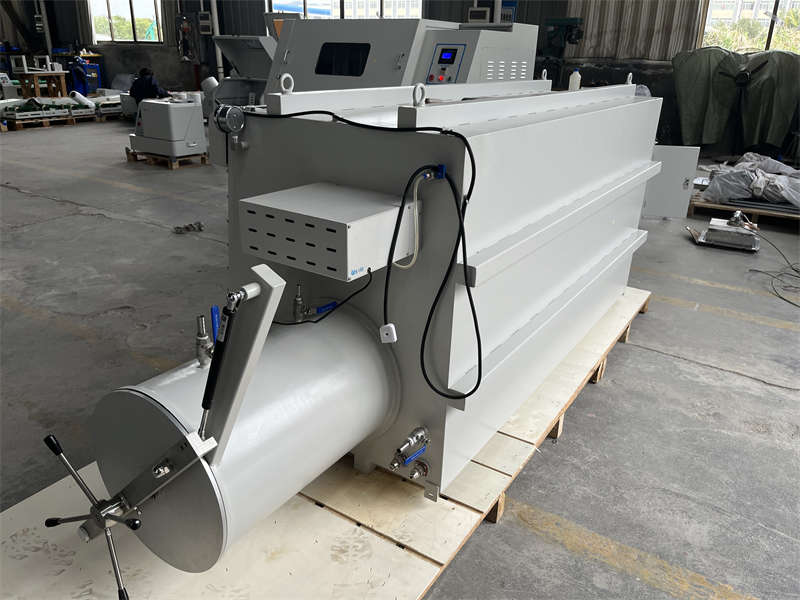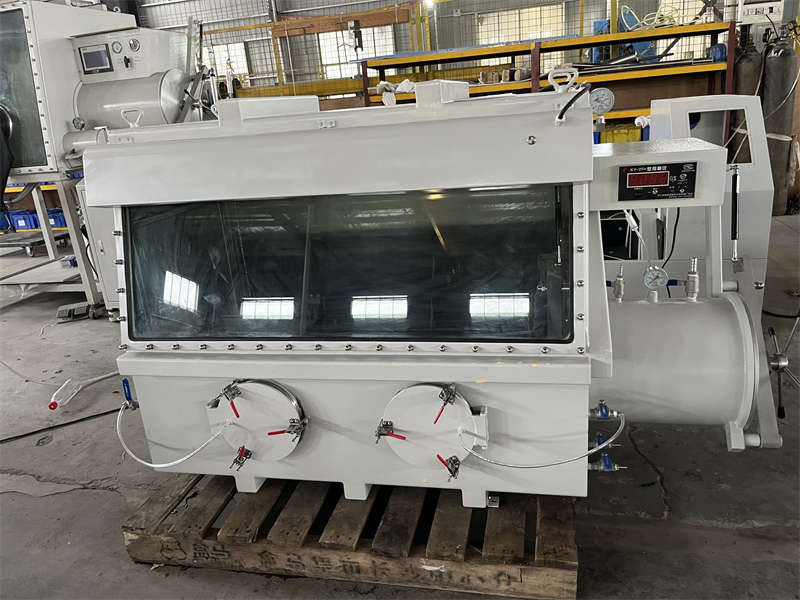In the realm of controlled environments, the glove box stands as a sentinel against contamination. This intricate assembly of materials and engineering is a testament to human ingenuity. It is a microcosm where the laws of physics and chemistry converge to create a sterile sanctuary. In the heart of Italy, a manufacturer has refined this technology into an art form, producing purification systems that are as much works of engineering as they are scientific tools.

The Essence of Purity
The core of any purification system is the glove box itself. It is a hermetic chamber, a fortress against external contaminants. Stainless steel, renowned for its corrosion resistance and strength, is the material of choice for construction. The selection of the appropriate grade, be it 316L for its superior resistance to chloride-induced corrosion or 304 for its balance of properties, is a critical decision.
The chamber’s geometry is a study in optimization. Every corner, every edge is designed to minimize the potential for particle accumulation. The use of finite element analysis (FEA) ensures that the structure can withstand the pressures and stresses it will encounter.
The Lifeblood: Purification Systems
The purification system is the heart of the glove box. It is a complex interplay of filtration, adsorption, and gas management. HEPA filters, with their microscopic pores, capture airborne particles with remarkable efficiency. Activated carbon, a porous material with extraordinary adsorptive capacity, removes organic vapors and other contaminants.
The design of the purification system is a balance of efficiency and longevity. The flow rate of the gas through the filters must be optimized to ensure maximum contaminant removal without undue pressure drop. The life expectancy of the filters is determined by factors such as particle loading, temperature, and humidity.
The Human Interface: Glove Ports and Seals

The glove ports are the critical interface between the operator and the controlled environment. They must provide a secure seal while allowing for dexterity and comfort. The materials used for the gloves and the port itself are carefully chosen to balance flexibility, chemical resistance, and durability.
Seals are the unsung heroes of the glove box. They prevent the ingress of contaminants and maintain the desired internal atmosphere. The design of the sealing surfaces, the choice of elastomeric materials, and the compression forces applied are all critical factors.
Manufacturing Mastery
The creation of a glove box is a meticulous process that demands precision and expertise. The manufacturing facility must adhere to stringent cleanliness standards to prevent contamination of the final product.
Laser cutting ensures accuracy and repeatability in the fabrication of the stainless steel components. Welding, often TIG or laser welding, is employed to create strong and hermetic joints. The assembly process is a delicate ballet of components coming together to form a cohesive unit.
Quality control is paramount. Every glove box undergoes rigorous testing to ensure it meets the specified performance criteria. Leak testing, pressure cycling, and particle counting are just some of the tests performed.
Applications Across Industries
The versatility of the glove box is reflected in its widespread application. In the pharmaceutical industry, it safeguards sensitive compounds from contamination. In research laboratories, it provides a controlled environment for experiments. In electronics manufacturing, it protects components from electrostatic discharge and particulate matter.
Each application has unique requirements, and the glove box must be customized accordingly. This might involve modifications to the chamber size, the purification system, or the glove port configuration.
The Future of Containment
The evolution of glove box technology is driven by the relentless pursuit of purity. Advancements in materials science, filtration technology, and automation are shaping the future of this critical equipment.
The integration of smart technologies is transforming glove box operation. Sensors monitor critical parameters, and data analytics provide insights into performance and maintenance needs. The concept of a “connected glove box” is becoming a reality, with remote monitoring and diagnostics.
Sustainability is also a growing concern. The use of recycled materials and energy-efficient components is gaining traction. The development of biodegradable glove box components is an ambitious goal that could revolutionize the industry.
The Italian-made purification system glove box is a testament to human ingenuity and engineering excellence. It is a product of meticulous design, precise manufacturing, and unwavering commitment to quality. As the world becomes increasingly reliant on controlled environments, the demand for such systems will only grow. The manufacturers who continue to innovate and push the boundaries of technology will be at the forefront of this vital industry.
Note: This article provides a foundation for a comprehensive exploration of Italian purification system glove box manufacturing. To enhance its depth and specificity, consider incorporating detailed case studies, technical drawings, and data-driven analysis. Additionally, exploring the regulatory landscape and certification standards applicable to this industry can add valuable insights.
Vous souhaitez vous concentrer sur un aspect spécifique de la fabrication des boîtes à gants ou explorer plus en détail une application particulière ?
